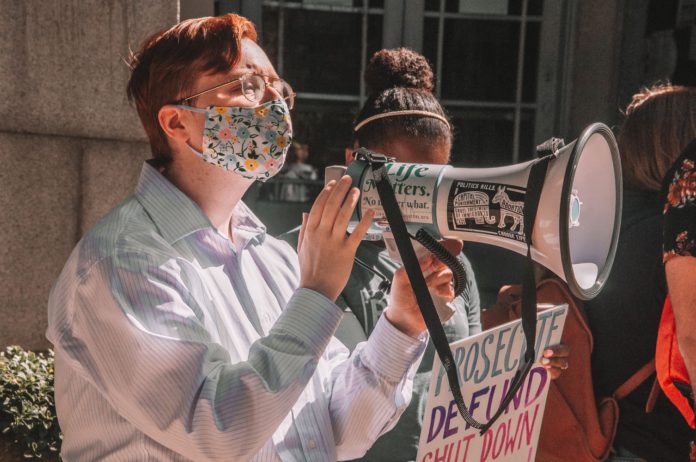
Health care facilities like Planned Parenthood have long battled the inevitable but sometimes violent and aggressive protests outside their doors. By 1993 in Colorado, it became a class 3 misdemeanor to approach within eight feet anyone entering or leaving a health care facility without getting permission from that person to give them a leaflet or handbill. While the law drew criticism from those who wanted to protest and picket outside of facilities, it stood up to the First Amendment claim leveled in Hill v. Thomas in 1999.
Colorado’s law stipulates “no person shall knowingly approach another person within eight feet of such person, unless such other person consents, for the purpose of passing a leaflet or handbill to, displaying a sign to, or engaging in oral protest, education, or counseling with such other person in the public way or sidewalk area within a radius of one hundred feet from any entrance door to a health care facility.”
In Hill v. Thomas, petitioners and self-titled “sidewalk counselors” Leila Hill, Audrey Himmelmann and Everitt Simpson, Jr. brought forward a claim that subsection 18-9-122(3), which creates a 100-foot radius zone around a health care facility as a “fixed buffer zone,” was unconstitutional. In its 1999 opinion, the Colorado Supreme Court referenced the eight-foot radius zone as a “limited floating buffer zone,” and determined no violation of First Amendment rights occurred.
The court also noted at least 48 other states enacted similar statutes. First Amendment claims against the laws in other states, and in Colorado in the case of People v. Baer, also failed. The 1999 opinion for Hill v. Thomas states, “here, the fundamental right balanced against the First Amendment rights of petitioners is the right that the General Assembly determined was ‘imperative,’ a citizen’s … right of access to ‘counseling and treatment’ at Colorado medical facilities.”
Ultimately the court also noted the larger 100-foot buffer zone in the statute was not enforceable outside of 100 feet away from the facility.
The court opinion noted the testimony given from health care professionals in the hearings for Colorado’s law. According to the opinion, one witness testified, “protestors [would be] yelling and screaming,” flashing graphic images of abortions and, in some cases, yelling racial slurs and profanities to people exiting or entering clinics.
Acts of violence still remain high outside of such facilities, and Colorado’s case against 2015 Planned Parenthood shooter Robert Lewis Dear Jr. is still pending. The Colorado Springs shooting resulted in the deaths of three people including one police officer and two bystanders. Dear has been found incompetent to stand trial multiple times and remains in custody at the Colorado Mental Health Institute at Pueblo.

